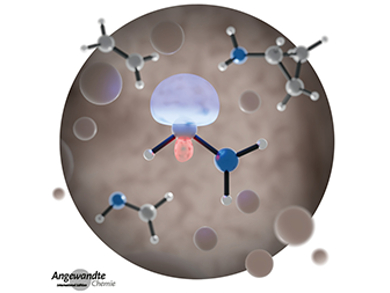In this issue, P. M. Kraus and H. J. Wörner review perspectives of attosecond spectroscopy for the understanding of fundamental electron correlations. How can it be used to spectroscopically access electron dynamics in molecules following ionization, and how could it be extended to identify the effects of electron correlation on dynamics? In a Minireview, H. Waldmann et al. discuss the ligand-directed divergent synthesis of carbo- and heterocyclic rings. In his Guest Editorial, S. V. Ley writes on the engineering of chemical synthesis, and how humans and machines can work in harmony.
In the Communications section, A. K. Eckhardt and P. R. Schreiner present spectroscopic evidence for the simplest amino carbene, aminomethylene (see picture). S. K. Maji et al. trapped cytotoxic oligomers and fibrils in a gel-like state of α-synuclein assemblies. Q. Zhang et al. produced highly stable lithium metal batteries by regulating the solvation of lithium ions in nonaqueous electrolytes, and G. J. Boons et al. succeeded in the controlled chemoenzymatic synthesis of heparan sulfate oligosaccharides.
- Angewandte Chemie 19/2018: Chemistry and Harmony,
Angew. Chem. Int. Ed. 2018, 57 (19).




